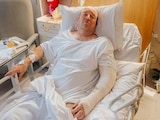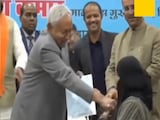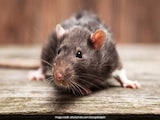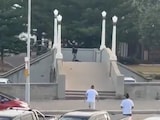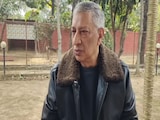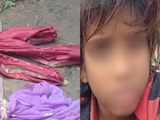When Rabbi Israel Weiss opens the doors of the refrigerated containers holding the bodies of hundreds of victims of the Hamas attacks the smell is overwhelming, but he said that most of all, he feels the suffering.
The former military chief rabbi came out of retirement to become one of the leaders of an Israeli operation to identify the more than 1,400 dead from the raids by Hamas fighters on October 7 that have plunged the rivals into a new war.
Teams of doctors, dentists, forensic experts and volunteers are working around the clock to identify bodies that were still arriving at the Shura military base, near the central town of Ramla, on Sunday, eight days after the attacks. Four other centres are carrying out similar work, officials said. Hundreds of bodies waiting to be identified or to be taken for burial are stored in containers lined up in the base next to a tent where the teams work.
Parts of the identification operation at Shura were shown to reporters on Sunday as Israel steps up preparations for an expected invasion of Gaza. Masks have to be worn when the container doors are open because of the overpowering smell of death.
"I open the door to the cooling containers, I see the bodies I smell the odour, I let it fill my lungs and my heart but what I feel is their pain and the loss," said the rabbi.
Infant victims
Mr Weiss and other staff at the identification centre said that there were signs that many of the victims had been tortured, raped or abused.
"Never in my life have I seen horrors that are behind us today," he said as he stood in front of some of the containers, with each holding up to 50 bodies.
"I have seen babies, women and men beheaded. I have seen a pregnant woman with her belly torn open and the baby cut out," he alleged."A lot of the women who were brought here were raped," Mr Weiss added.
Hamas, who lost an estimated 1,500 fighters in the attacks, has dismissed allegations that those killed in the attacks were abused. The Israeli government has already said that some children were tied up and burned and some victims were hiding in air raid shelters that Hamas fighters threw grenades into.
DNA samples, fingerprints and dental records are all used to identify the victims. Almost 90 per cent of the 286 soldiers killed in eight days have been identified, but barely half of the civilians, officials said.
Horrific sights
Senior Staff Sergeant Avigayil, who gave only a first name, told reporters there were signs that some of the bodies had been booby-trapped.
"Nothing has prepared us for this," she said when recounting the abuse of the bodies that volunteers had seen.
Like the sergeant, Captain Maayan, a dentist and reservist taking part in the identification, broke down in tears as she told of the harrowing process. "We see horrific sights," she said also telling of signs of torture and abuse.
"We hear the screams and the cries of the babies losing their parents."
Ms Mayaan said one victim she had identified had been a patient at the Tel Aviv clinic where she works. Psychologists and social workers are also taking part to help the identification teams at the end of each day. But the military, who say there are at least 126 people held hostage by Hamas in Gaza, has warned that it could take weeks to get complete figures on the number of victims and put a name to each one.
(Except for the headline, this story has not been edited by NDTV staff and is published from a syndicated feed.)

